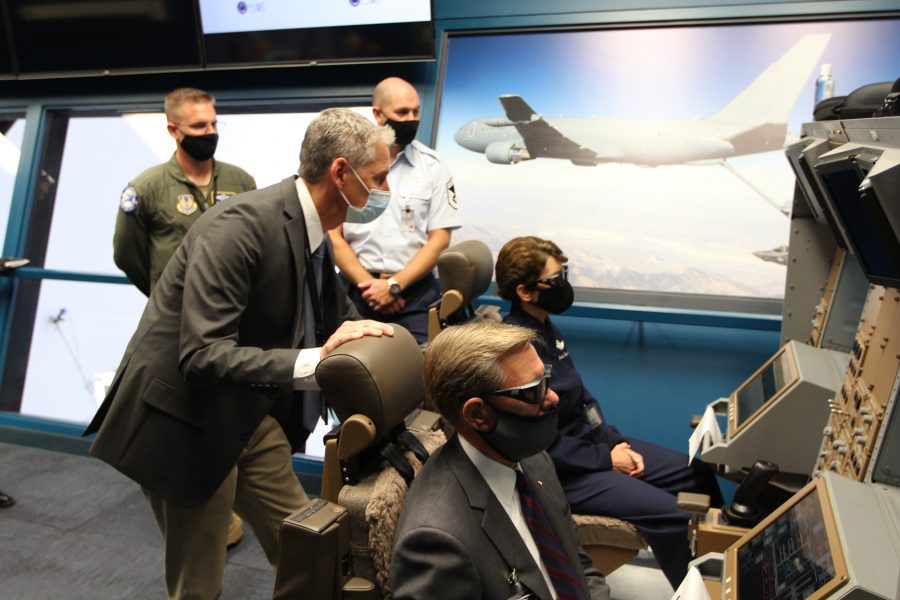Air Force acquisition and Air Mobility Command leaders are looking to set the requirements of future tankers, as the improved suite of cameras and sensors for the KC-46 brings the service to the “doorstep” of autonomous aerial refueling.
The Air Force and Boeing’s agreement to move forward with the Remote Vision System 2.0, announced in the spring, includes high-tech sensors that track receiving aircraft, feeding into an operator’s location with high-definition displays. All that’s missing, once that new system is installed and operational, is some additional software to enable automation, said Will Roper, the service’s assistant secretary for acquisition.
“The KC-46 is going to take us all the way up to the doorstep of semi-autonomous and autonomous tanking,” Roper told reporters Sept. 23. “And the Air Force has committed to put in those algorithms, because when you build a properly designed RVS, you’ve done everything needed to do autonomous tanking. The only thing you’re missing are the algorithms to actually do it. … We don’t have requirements for … tanking autonomously, we don’t know where, when, how. And now’s a great time to start studying that, and to do it in conjunction with what comes next.”
Roper and AMC boss Gen. Jacqueline D. Van Ovost met in recent days on the topic, and committed to “putting some of our best minds on this problem.”
Unlike other weapons systems, such as the E-8C Joint STARS, which will be replaced by a suite of new capabilities under the Advanced Battle Management System program, fuel can’t “break up” easily. How to reliably provide fuel in contested areas will continue to be a “strategic question” for the Air Force, Roper said.
“How can you defend a tanker against an onslaught of fighters who know that every tanker you kill is like killing a lot of fighters, or bombers, or drones it supports,” Roper said. “ … We’re definitely going to be thinking about autonomy as a way to change the risk calculus, having something smaller without people [so] that we could take more risk, with prices lower as a way we could go after the problem.”
Another way to get after the problem is to have a large tanker operate in a “stand-off” area, away from the threats, with smaller automated “micro tankers that do that last mile—the dangerous mile,” Roper said.
“It doesn’t have to be one or the other, it’s good to have more than one option,” Roper said. “I expect that as we really look at airpower in the truly contested environment, that we’ll be looking at fuel very strategically, and we may have a different solution for outside versus inside. And I think we will value, increasingly, aircraft that have range for the last mile.”
“It’s a solvable problem,” but the Pentagon needs to be flexible enough to pursue multiple options instead of solely focusing on one, he said.
